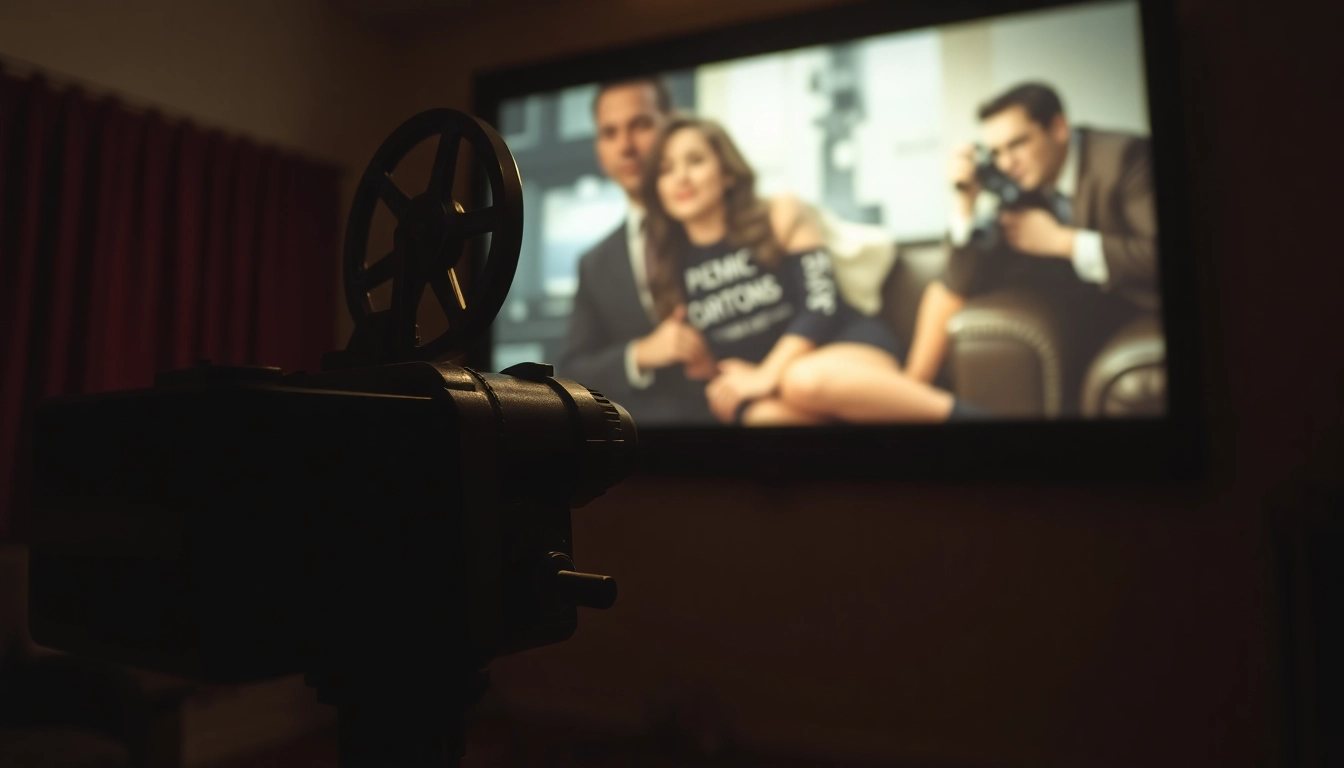Understanding Public Domain Films
What Are Public Domain Films?
Public domain films are works that are not protected by copyright law, allowing anyone to use them freely without needing permission. This lack of copyright protection can occur for various reasons, including the expiration of the copyright term, which varies by country. For instance, in the United States, works published before 1928 are typically in the public domain, meaning they can be watched, shared, and adapted without legal constraints. This opens a vast treasure trove of cinematic history suitable for both entertainment and education. Films falling into this category include classics that have shaped the film industry and significant cultural narratives, making public domain films a valuable resource for film enthusiasts and creators alike.
History and Evolution of Copyright
The historical context of copyright reveals much about why certain films enter the public domain. Copyright laws were established to protect the rights of creators and ensure they could benefit financially from their works. In the U.S., the Copyright Act of 1909 allowed copyright protection for 28 years, with the possibility of renewal for an additional 28 years. However, with the Copyright Act of 1976, the term was extended, allowing for a maximum of 95 years for works published after 1978, or the life of the author plus 70 years for individual creators. As a result, many older films that have surpassed these durations are now available to the public, enriching our collective heritage.
Benefits of Public Domain Films
Public domain films provide numerous benefits. First and foremost, they offer free and unrestricted access to classic cinema that has influenced contemporary filmmaking. Educators often utilize these films in classrooms to teach various subjects, including film studies, history, and even literature. Additionally, independent filmmakers and content creators can draw upon public domain material for inspiration or as foundational components in new projects. This not only promotes creativity but also serves to preserve and celebrate our cultural legacy. Lastly, public domain status brings works out of obscurity, allowing new generations to discover and appreciate films that may have otherwise been forgotten.
Finding Public Domain Films Online
Top Websites to Access Public Domain Films
Accessing public domain films has become easier with the rise of various dedicated websites and resources. Some of the top platforms include:
- Internet Archive: A vast library providing access to countless films, books, and audio recordings, the Internet Archive hosts a significant collection of public domain movies.
- Public Domain Movies: This site specifically curates a list of films that fall into the public domain, allowing users to browse efficiently.
- National Film Registry: The National Film Preservation Board designates films for preservation and offers a selection of public domain works that showcase American film history.
- Library of Congress: The Library of Congress features an extensive range of films that are accessible for free and are in the public domain.
Tips for Searching Public Domain Content
When searching for public domain films online, consider the following tips to enhance your experience:
- Use Specific Keywords: Include terms like “public domain,” “free films,” or specific titles to refine your search.
- Check Filmmaker Rights: Ensure that the film you wish to use is indeed public domain, as mislabeling can lead to legal issues.
- Explore Film Archives: Search through various film archives, as many universities and libraries offer extensive collections of historical films.
- Utilize Social Media Groups: Platforms like Reddit have communities dedicated to sharing and discussing public domain films.
Evaluating Film Quality and Sources
While public domain films can be freely accessed, it’s essential to evaluate the quality and provenance of the sources. High-quality digital transfers of classic films are available, but some platforms may post low-resolution versions. Before using any film, verify:
- Source Credibility: Use reputable sites known for maintaining a collection of public domain films.
- Technical Quality: Assess the video quality and audio clarity to ensure an enjoyable viewing experience.
- Film Restoration Status: Some sites offer restored versions that enhance the viewing experience significantly compared to standard versions.
Notable Public Domain Films to Watch
Classic Films Everyone Should Experience
There are numerous classic films that have attained public domain status, providing a glimpse into the artistic trends of their times. Some notable examples include:
- The General (1926): A silent film masterpiece directed by Buster Keaton, featuring innovative physical comedy and stunning visual storytelling.
- Night of the Living Dead (1968): George A. Romero’s seminal horror film that not only defined the zombie genre but also incorporated social commentary.
- His Girl Friday (1940): A fast-paced comedy starring Cary Grant and Rosalind Russell, renowned for its rapid-fire dialogue and clever plot twists.
Genres Represented in Public Domain
Public domain films encompass a wide range of genres, promising something for every cinematic taste. Common genres include:
- Horror: Many early horror films, such as Nosferatu(1922), are part of the public domain, allowing audiences to explore the origins of cinematic terror.
- Comedy: Classic comedies from the silent era, like The Kid (1921) starring Charlie Chaplin, continue to entertain viewers with their timeless humor.
- Science Fiction: Films like Metropolis (1927) remain influential and provoke discussions on technology and society.
Modern Favorites that Became Public Domain
In addition to classic films, several modern favorites have entered the public domain, much to the delight of audiences. Notable mentions include:
- Plan 9 from Outer Space (1959): Often cited as one of the best worst films in history, Ed Wood’s cult classic has become a staple of bad-movie nights.
- Santa Claus Conquers the Martians (1964): A holiday favorite featuring Martians trying to kidnap Santa Claus, which has held its place in pop culture due to its nostalgic charm.
- The Amazing Mr. X (1948): A film noir classic that blends mystery with supernatural elements, showcasing the era’s unique production style.
Using Public Domain Films in Your Projects
Legal Considerations of Public Domain Usage
Utilizing public domain films opens up exciting possibilities, but it’s vital to understand the legal landscape. Films in the public domain can be used creatively in various projects, such as:
- Documentary Films: Integrating clips of public domain films can substantiate historical narratives or add visual context.
- Art Projects: Visual artists may incorporate frames from public domain films into multimedia installations or collages.
- Remixes and Mashups: Musicians and filmmakers can remix public domain footage to create new compelling narratives or music videos.
Creative Uses of Public Domain Films
The creative potential surrounding public domain films is vast. Here are several ideas to inspire your projects:
- Create a Modern Adaptation: Take the essence of a public domain film and reimagine it in a contemporary setting.
- Produce a Film Series: Curate a series around a public domain theme, like horror or adventure, screening movies followed by discussions.
- Animation Work: Produce short animated segments based on scenes from public domain films, giving new life to classic stories.
Inspiration for Content Creation with Public Domain
Content creators can leverage public domain films in countless ways. Here are a few actionable steps to ignite your creativity:
- Film Critiques and Reviews: Write pieces analyzing the cultural significance and filmmaking techniques of public domain classics.
- Podcast Discussions: Host episodes dedicated to exploring various public domain films, their histories, and their impacts.
- Social Media Campaigns: Share clips or trivia about public domain films on platforms like Instagram or TikTok to engage a broader audience.
Challenges and Misconceptions about Public Domain Films
Understanding Copyright Confusion
The realm of copyright can often lead to misconceptions, especially regarding what constitutes a public domain film. Many creators assume that all pre-1923 films are in the public domain, which is not always the case. Certain films might feature copyrighted elements, like music or screenplay adaptations, complicating their public domain status. It’s essential for users to conduct thorough research to understand any associated copyright risks fully.
Common Myths Debunked
Several myths surrounding public domain films can deter potential users from embracing them fully:
- Myth 1: All old films are public domain. Truth: While many are, the copyright status can differ based on various factors, including renewal registrations.
- Myth 2: Public domain means you can modify films freely. Truth: While many public domain works can be adapted, users should ensure they don’t infringe on other existing copyrights in their adaptations.
- Myth 3: Public domain films are of low quality. Truth: While some films may be poorly preserved, many public domain films have been restored and provide high-quality viewing experiences.
How to Confirm Public Domain Status
To determine if a film is in the public domain, follow these steps:
- Check Publication Date: Generally, works published before 1923 are in the public domain.
- Examine Copyright Notices: Films released after 1923 may still be copyrighted if they had a copyright notice and the copyright was renewed.
- Consult Reliable Sources: Use established databases and resources like the Wikipedia List of Public Domain Films to verify a film’s status.



